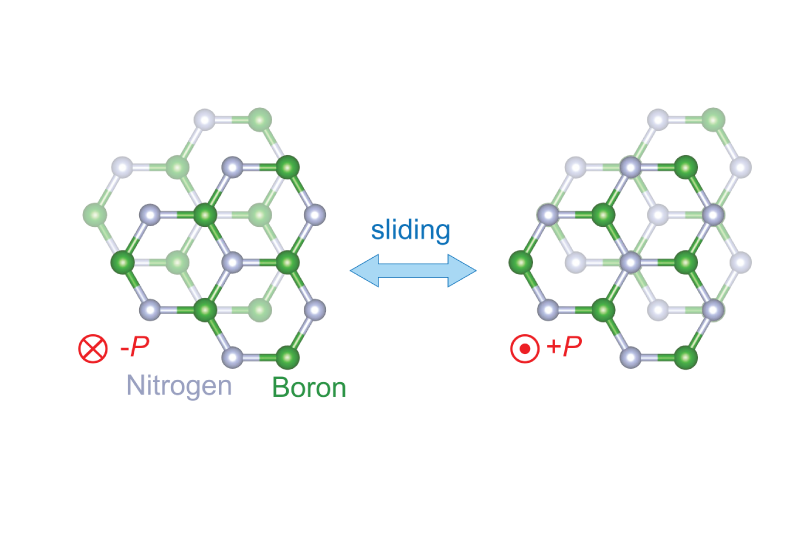MIT News July 26, 2024
Ferroelectric materials change polarization in response to an electric field and are useful for memory. However, these materials often suffer from fatigue as they are cycled many times, capping their lifetime. An international team of researchers (USA – MIT, Harvard, Japan) investigated the performance of a ferroelectric field-effect transistor (FeFET) based on sliding ferroelectricity in bilayer boron nitride at room temperature. Sliding ferroelectricity represents a different form of atomically thin 2D ferroelectrics, characterized by the switching of out-of-plane polarization through interlayer sliding motion. They examined the FeFET device employing monolayer graphene as the channel layer, which demonstrated ultrafast switching speeds on the nanosecond scale and high endurance exceeding 1011 switching cycles, comparable to state-of-the-art FeFET devices. According to the researchers these characteristics highlight the potential of 2D sliding ferroelectrics for inspiring next-generation nonvolatile memory technology… read more. TECHNICAL ARTICLE

Schematic showing the crystal structure of the boron nitride… Credit: Ashoori and Jarillo-Herrero labs.